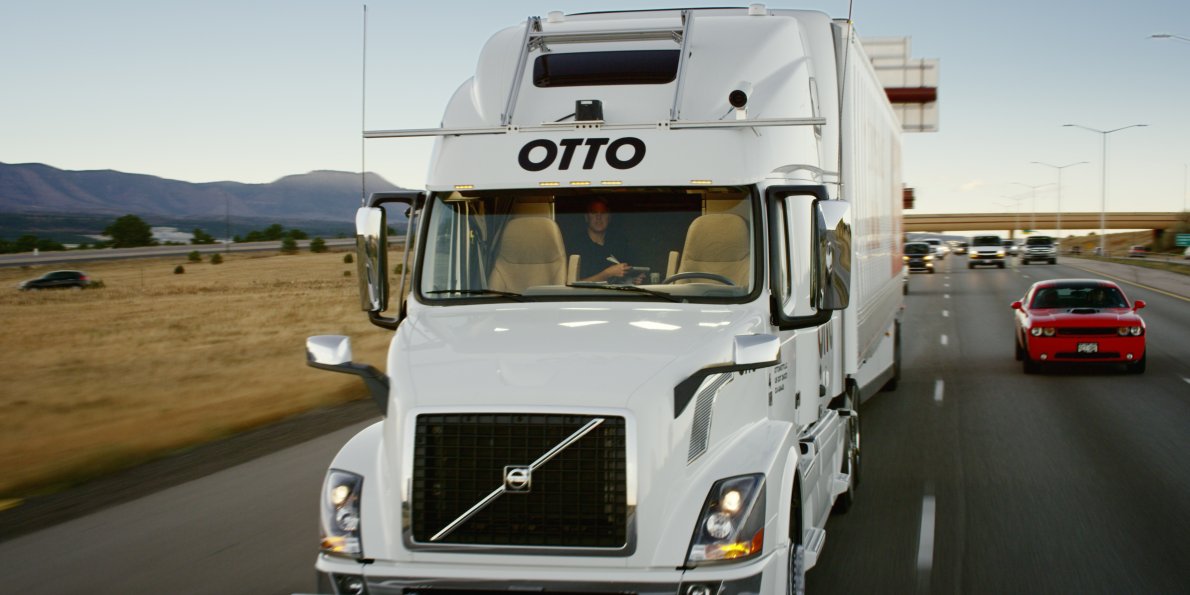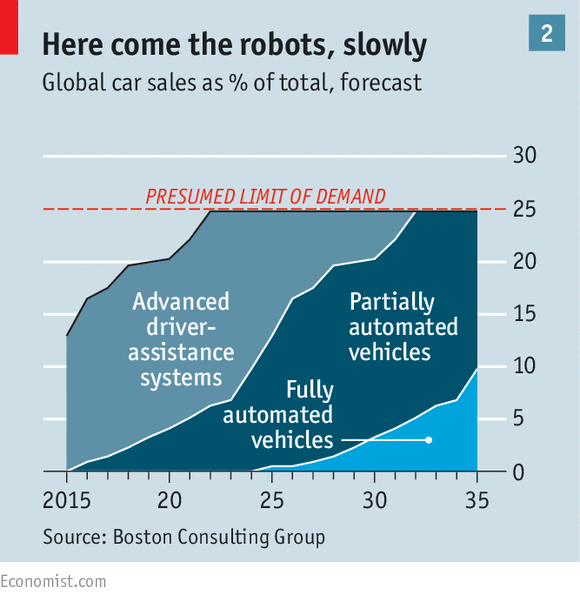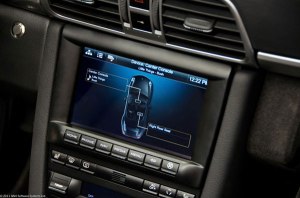September’s Harvard Business Review focuses on the concept of design thinking and its application to how businesses function and strategize across a number of industries. This is my take on how carmakers can integrate this design mindset to create a product that goes beyond any other device. (See original article here)
My mom’s old car that was handed down to my sister is a 2002 Acura MDX, a staple mom-car that sold as many units as it could make through the early 2000s. It has a decent, somewhat fidgety navigation unit that is also a touchscreen climate control built into a nicely wood-trimmed center stack, and has Bose surround sound and heated folding mirrors.
As I approach car buying thirteen years later, I myself would love a car with those same features, and if properly disguised, that 2002 Acura MDX could look a heck of a lot like the new models you can buy today. There’s more functionality in today’s infotainment systems, of course, but the systems aren’t any better integrated into the total car experience than they were in 2002. If I were to take a 2015 infotainment console from a new MDX and put it in my mom’s 2002 one, people who didn’t know cars super well would have a hard time differentiating the new car from the old. Why? Because the tech that they’ve put in cars from before 2002 and into 2015 has been designed as a slap-on – an extra option that doesn’t really belong in the driving experience, but sits on top of it all like a superficial nice-to-have. It has no real “roots” in the car’s physical design and experience – the screens still look like they’ve been pasted to the dashboards as an after-thought, the user interface is as much a nightmare as it was in 2002, and once you locate the gadget that somehow controls it all, everyone’s reaction seems to be along the lines of “what the hell am I supposed to do with this?” or “God this is taking forever,” and then they pull out their smartphone.
So why are the technologies from my mom’s ’02 MDX no better integrated than today’s ample technologies? Because automakers are so obsessed with keeping pace with the smartphone by cramming more features into the screens that they don’t see past the features themselves to creating a holistic car driving experience. Hence, the “smartphone on wheels” was born.
I think we can point at a number of factors behind the “smartphone on wheels” mania that has occurred, but it boils down to the automakers being absolutely petrified of Apple and Google, and for good reason. Customers today care about the tech (particularly smartphone) elements in the car equally if not more so than the technical, physical elements. But that’s only the beginning of the story – if automakers better integrated the digital experience to enhance and cater to a deeper physical experience, I’m willing to bet more people wouldn’t just care about being able to use apps from their smartphone.
The real magic that has made smartphones increasingly more valuable as time goes on are the apps that they run and the products they connect to that are powered by non-Apple/Google companies. This is why Apple/Google drool at the car – because there are huge possibilities for what the phone can do in a car, not unlike what a phone can do with smart appliances like thermostats.
So really what keeps OEMs up at night is the possibility of becoming just another app, just another appliance like a smart thermostat whose real value proposition is that it is controlled through the user’s coveted smartphone. If this were to be the case and all everyone cared about was the fact that the car connected with their iPhone, there would be fewer automakers producing cars for much less profit.
So carmakers need to decide whether they want to be the app company or they want to try their hand at beating Apple/Google. While Apple/Google are light years ahead of automakers when it comes to digital design and experience, carmakers excel at physical experiences. And the beauty of knowing how to create an awesome physical experience full of emotion is that integrating the digital experience can deepen and bring to life the physical experience of the car.
I tend to think carmakers can win the battle in creating a holistic experience designed to integrate both digital and technical features. But in order to do so, they have to stop playing by Apple/Google’s rules of cramming endless features into screens, stop trying to make a better smartphone on wheels where virtual and physical experiences are silo’d, and start focusing on how the design of the digital and physical user experiences together could make a car way cooler than anything Google’s little self-driving teletubbies could pull off.
The first step to this strategy is realizing that although the definition of what a car means to certain people has changed since the ’60s, cars still can and do evoke a range of vibrant emotions for the people inside, and, if done correctly, the digital component can enhance the physical and emotional feel and relationship we have with cars tenfold further than simply integrating smart phone capability. The car must be digitally and physically what people need it to be when they need it, meaning it should be able to transform seamlessly from soccer mom carpool car to personal assistance commuting pod to track-ready performance car in a matter of seconds.
One teaser example: you bought a normal car and got one with special features catered to racing and performance. You have a free bit of highway in front of you on a casual Saturday and the light is about ten seconds from turning green. You bring up the performance screen, which tells you that a combination of torque vectoring, a higher RPM rev rate, and a lower center of gravity will produce the optimal balance for you to leave everyone else at the line. You adjust different aspects of the car on-screen based on its recommendations and hit submit, and in a matter of seconds you feel the car growl a bit louder and sink a bit lower to the street as it sets its new stance (whew – I just got goosebumps thinking about it). You may very well say that the days of performance cars are over, but sales figures say differently. Just ask the people in charge of the Dodge Hellcat line or the Mercedes AMG line what their bonuses look like this year compared to their peers.
Second more mundane example: you’re late for a meeting, so the self-drive mode isn’t going to fly today because it’s too cautious and slow for right now. You’re trying to edit the final moments of a presentation while also driving like a lunatic. The car knows your route to work, and is suggesting lane changes to weave through traffic through your heads-up display, while asking if it’s ok to alert your teammates that your ETA is three minutes after the meeting starts so they might want to consider kicking it off without you. The car also notices that your eyes are on the road only about 6 of every ten seconds, so it becomes extra vigilant about detecting possible collisions, and when necessary, making a lane change or overriding your lead foot. You speed to the front of your office and find an open parking place and run inside without feeding the meter. You check your phone after the meeting and your car says that it detected you parked in a reserved space, so it moved around the corner and fed the meter. The only thing missing to this exchange was “I hope your meeting went well!”
Between these two scenarios, the first one makes you feel like a total bad ass, and now you and the car share this special “don’t tell your spouse” moment. In the second, the car is like any number of under-appreciated assistants on any number of TV shows and movies – you feel like you owe them something for all the sacrifices and help they’ve selflessly given you. Has your phone ever made your blood rush and feel like a bad ass or feel like you owed it something on an almost-human level?
Going back to my statement about seamlessly transforming to what a driver needs a car to be in “a matter of seconds” – that “matter of seconds” is in itself a cornerstone of what separates a car from a smartphone on wheels, and it only happens if the digital and technical aspects of the car are in complete harmony. Neither of the two situations elicit the same emotional feel without a thorough design strategy. In the first example, I never would’ve gotten goosebumps if I wouldn’t have felt the car sink into its haunches and snort as a result of my finger touching buttons on the screen. It makes you feel a bit on edge thinking about what you just unleashed under the hood. In the second example though, I want the car to know what’s happening without having to click an “I’m late please help” button. You never would’ve felt true empathy for the car had it not instantly known that you were late, known who your teammates were, known which route you always take, and instead of telling you to slow down like a pre-programmed system would, it gave you help like any co-pilot would and went one step further, a step that you wouldn’t have noticed until you came out and your car had been booted.
Does your smartphone need to be involved for these things to work? Probably for some things. But that’s not the point. The point is that the car owns the experience, and the phone is merely an aid, which is a different direction from where many automakers feel they’re headed – a car that’s just a smartphone with wheels.
A phone can tell you you’re going to be late, but it can’t physically help you be less late. A phone can recommend how to make your car perform better, but itself cannot move you from 0 to 60 faster. And a phone can tell you you’re parked illegally and then show you via a live camera feed the cop writing you a ticket, but it can’t do anything about avoiding the ticket. Car companies are great at creating beautiful physical experiences – the noises, the feel, the rhythm, even some of the self-driving tech is already applause-worthy. But in an age of technology inundation, carmakers need to realize and embrace the notion that tech isn’t superfluous or an add-on or bad. With a cohesive design strategy based on integrating the virtual with the physical, a driver can forge a deeper emotional connection with the car – one based on a true relationship.




